How To Boost Trichome Production In Cannabis
Ready to take your cannabis plants to the next level? Keep reading to find out how to take action throughout a weed plant's life cycle to maximise trichome production, leading to greater levels of cannabinoids and terpenes.
Trichomes are the lifeblood of cannabis buds. Without them, there would be no taste, no cannabinoids, and, most importantly, no high. However, it isn't enough for many growers to let plants develop trichomes and call it a day. Instead, a few simple changes throughout the vegetative and flowering stages can maximise trichome production, helping your resinous buds reach their full potential.
But before we get too far ahead of ourselves, let's quickly cover what, exactly, a trichome is, and why stress is a fundamental principle in boosting trichome production.
What are trichomes?
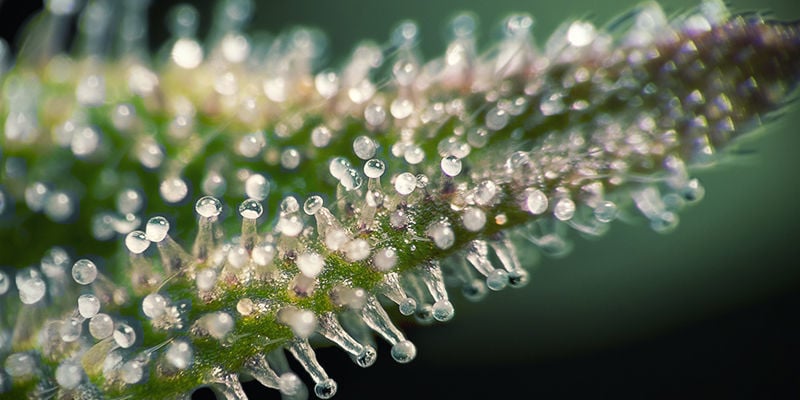
Take a peek at cannabis buds under a microscope, and you'll notice thousands of white, glandular “mushrooms” protruding from the surface. Okay, so they aren't mushrooms exactly, but each trichome has a bulbous tip, earning them the mushroom nickname. This bulbous tip houses resin containing terpenes and, of course, cannabinoids such as THC. In short, without trichomes, smoking weed would be an incredibly lacklustre experience.
Of course, cannabis plants didn't evolve over thousands of years only to develop trichomes so we could smoke or vape them. Instead, trichomes are a biological defence mechanism cannabis plants use to protect themselves from pests and pathogens. It's by focusing on the protective nature of trichomes that growers can enhance or increase their production.
Why is “good” stress important for trichome production?
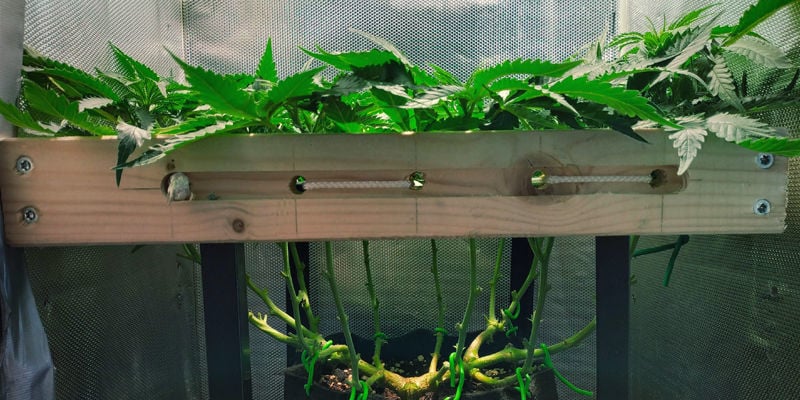
By encouraging a weed plant to activate its defences, we can increase resin production, and thus cannabinoid and terpene production. The key, however, is discerning between good stress and bad stress (that which will ultimately hamper or even kill a plant).
The simplest explanation of how good stress helps trichome production is to think of how your own body responds to stressful situations. Stress is an inevitable and often necessary reaction that not only helps us to focus, but can even increase stamina; a beneficial outcome when up against last-minute work deadlines. In cases like a looming assignment, the stressor isn't endless—you know the situation is coming, and you know when it will end.
To increase trichome production, we need to apply the same principle to cannabis plants, subjecting them to several stressful but manageable situations. By gently inflicting stress on a plant during the vegetative and flowering stage, it's possible to activate its self-defence mechanism and increase resin production without causing irreparable harm.
During the vegetative phase
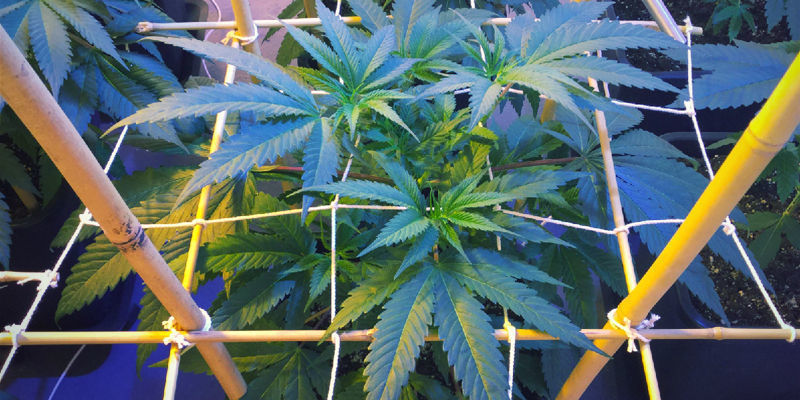
A young sapling may have only been in the world a few weeks, but that doesn't mean we can't subject it to a little stress to ensure a stronger plant. While stress won't necessarily increase trichome production directly (as there aren't any at this stage), it can help plant structure and stability, which has beneficial effects on trichome development down the line.
Try stress-training cannabis plants
There are two options for stress-training a young cannabis plant; low-stress training (LST) and high-stress training (HST). The former uses various techniques to gently bend and manipulate plants into the desired shape, while the latter is much more aggressive and usually involves cutting or breaking the stem after plants have developed several nodes.
Both options can work, but HST is best approached with an experienced hand. If you've never tried super cropping or main-lining before, we recommend sticking to low-stress options. Don't forget that this stressor is one of many in our quest to increase trichome production, and you need to ensure each plant has sufficient time to recover. LST (ScrOG) has the most negligible impact on plant growth compared to HST.
Start of the flowering period
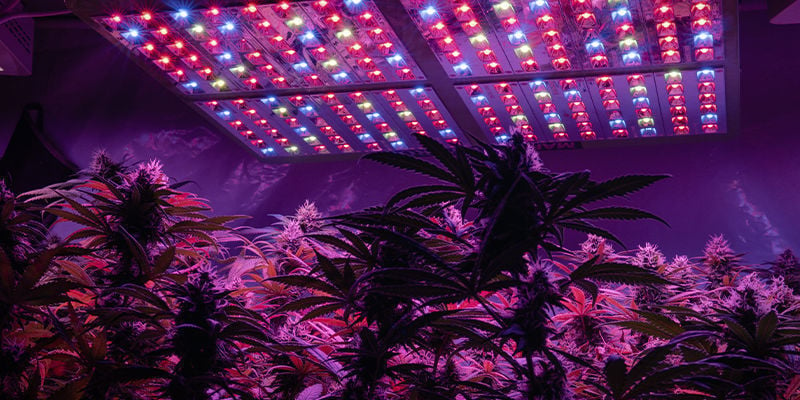
The veg stage has gone off without a hitch, and your cannabis plants are ready to make the switch to flowering. It's at this crucial transition that you can make some straightforward adjustments to kick-start trichome production.
Trichome-boosting supplements
Adding trichome-boosting supplements to the mix is a simple suggestion, but one that's often overlooked. That's not to say a decent soil mix and the standard NPK ratio won't work wonders for most plants, but the focus here is pushing trichome production to the max.
As such, there are several nutrient blends you can employ with a specific combination of macro and micronutrients. We won't go into the specifics of each one; just make sure you follow the manufacturer’s dosing recommendations to get the best results.
Use extra-bright lights
Photoperiod marijuana plants progress through their life cycle according to changes in the light schedule. However, you'll want to do more than simply adjust the schedule to get the most from your plants; you'll also want to get the light intensity and coverage spot-on. Optimising light exposure and quality during lights-on hours will maximise your plants’ ability to develop large, resinous buds.
A couple of tricks you can use include adding sidelights to ensure complete coverage throughout the canopy. You could also opt for LEDs so you can position your lights as close to your plants as possible, without scorching or heat issues. Finally, consider lining the grow room or tent with reflective material to improve overall coverage—it's a lot cheaper than running supplementary lighting.
2–3 weeks before harvest
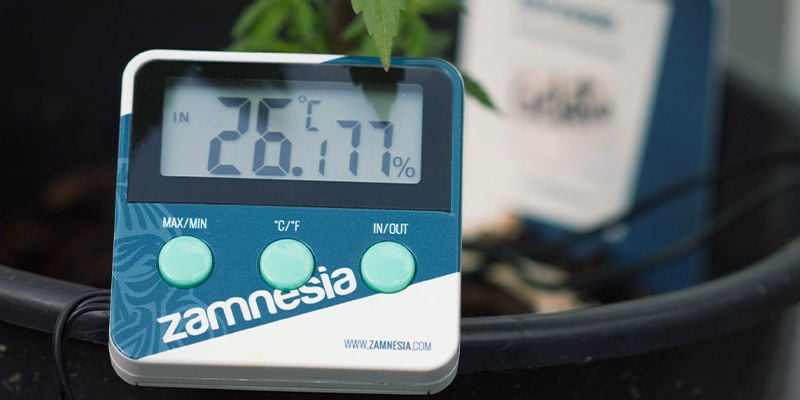
With a well-established nutrient routine and one (or several) well-positioned lights, your cannabis plants are going from strength to strength. Although the end may be in sight, there's a handful of actions we can take to keep pushing resin production.
Supplement with UV-B light
Some growers attest to the trichome-boosting potential of UV-B exposure, especially during the final weeks of the flowering stage. And although scientific research is lacking on the topic, the theory is that trichomes help protect cannabis plants from UV rays, so increasing exposure may thereby increase trichome production.
The most readily available source of UV-B is a metal halide grow light, so adding one to your grow should be a straightforward and relatively cheap affair. The biggest watch-out with UV-B is the damage it can cause to both plant and grower. You don't want to expose weed plants to excessive amounts of UV-B any earlier than 2–3 weeks into their development. As a grower, always ensure you wear protective glasses and clothing to limit the impact on your eyes and skin.
Alter humidity and temperature
Humidity and temperature are fundamental to successfully harvesting cannabis. In fact, you would never make it to the flowering phase without suitable levels of both, so why change either 2–3 weeks from harvest?
The answer is that we want to simulate the conditions a cannabis plant would experience in the wild, mimicking the arrival of winter. Dropping temperature to between 15–16°C and humidity to 35–40% helps in achieving this goal while still keeping conditions within tolerable levels. The change tells plants that “winter is coming” and encourages them to put all their effort into flowering and trichome production (and therefore terpene and cannabinoid production) before it's too late.
7–10 days before harvest
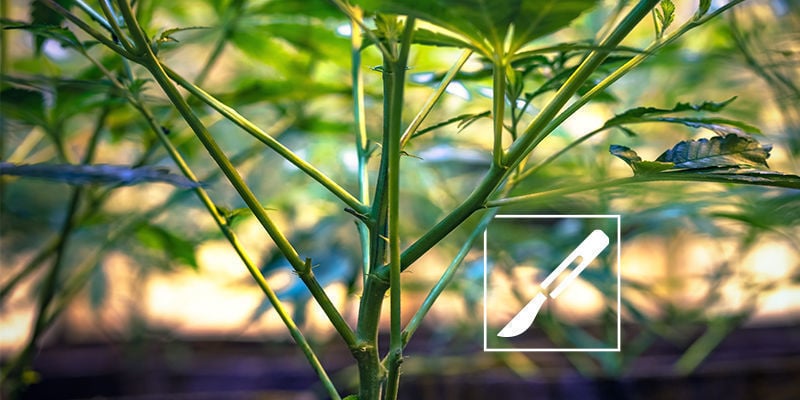
By this stage, buds are well-formed, and you should notice some branches bowing under the weight of all your hard work. That said, the last 7–10 days is when you can maximise trichome production with the right know-how.
Splitting stems
A somewhat controversial practice, splitting stems is a high-stress activity that can make or break your harvest (literally). It is definitely a technique aimed at those experienced in cannabis cultivation. Still, with a scalpel in hand, the idea is to split stems vertically, before inserting skewers to prevent the opening from closing. Following a step-by-step guide is a must, as too much stress this close to harvest could ruin all your hard work.
Flush cannabis plants to prevent nutrient lockout
Flushing is a common practice among growers, and one of our list's most straightforward stress techniques. The idea behind flushing is that removing excess nutrients in the soil sends the plant into a mini panic. Instead of having ready access to what it needs, it must now focus solely on sustaining and developing buds by using its own nutrient stores. Hopefully, the result is greater levels of terpenes and cannabinoids.
48 hours before harvest
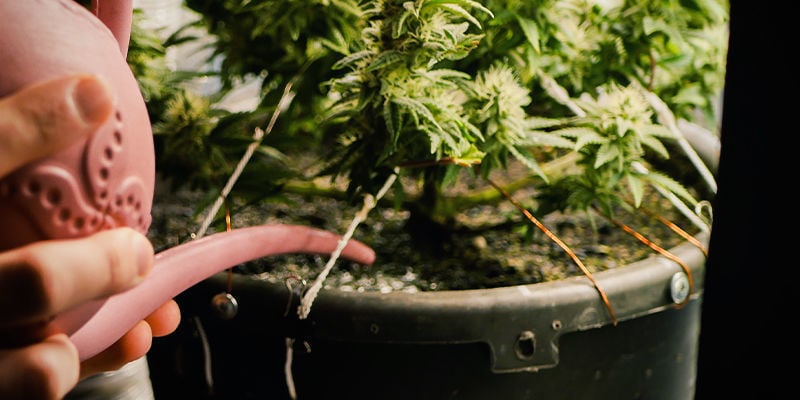
Mere days away from harvesting your ripe buds, two final techniques stand between you and success.
Water with ice-cold water
Another largely unsubstantiated claim, but one that has grown in popularity over the years—watering cannabis plants with ice-cold water. Presumably, the idea is to shock the plant's root system and cause enough stress to promote trichome production without ruining your harvest. You'll want to give your cannabis plants an ice bath as close to harvest as possible.
Give cannabis plants 24–48 hours of total darkness
Again, this technique tries to mimic conditions a cannabis plant might experience in the wild. By subjecting plants to 48 hours of total darkness right before harvest, some growers believe it stresses the plant into thinking it's missed its chance to flower as nights start becoming longer.
Although it's just us manipulating the environment, there's no extra work involved in turning off the lights right before you harvest, so it's worth a go. Just make sure you keep temperature and humidity balanced during the dark phase to prevent any last-minute bud rot or mould.
What trichomes look like when they're ready
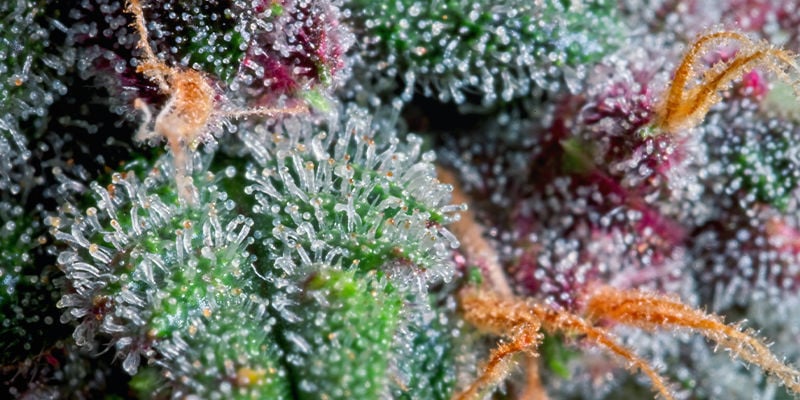
It's been an exciting few months, and along the way you've tried some or all of the tips outlined above to improve trichome production—now what? It's time to harvest, of course! However, if we had to offer a final bonus piece of advice, it would, of course, be to harvest buds at the optimal time. Harvest too early, and you'll cut trichome production short. Harvest too late, and cannabinoids like THCA will start to degrade into CBNA.
There are several ways to tell when buds are ready to rock and roll, but one of the most widely accepted is checking the trichome colouration with a microscope.
Harvest when 50–70% of the trichomes have turned milky white. Combine this method with checking that the majority of pistils have darkened from white to red or amber.
You'll still need to subject your buds to a thorough drying and curing, but what you hold in your hands should be the most trichome-loaded haul of your marijuana growing career. Remember that no amount of stress can overcome a plant's genetics. Starting with a marijuana strain you know delivers excellent results, combined with the techniques above, is the best way to maximise trichome production.
-
 4 min
25 September 2023
5 Super-Sticky Cannabis Strains
When buds feel sticky between the fingers, it feels just right. Discover what makes cannabis sticky and which strains deserve the title for being the stickiest.
4 min
25 September 2023
5 Super-Sticky Cannabis Strains
When buds feel sticky between the fingers, it feels just right. Discover what makes cannabis sticky and which strains deserve the title for being the stickiest.
-
 4 min
19 May 2022
Top 10 High Yielding Feminized Cannabis Strains
Just by picking the right strain, yields can be improved dramatically. All the research, preparation, and cannabis care cannot outweigh the importance of choosing strains with proven genetics....
4 min
19 May 2022
Top 10 High Yielding Feminized Cannabis Strains
Just by picking the right strain, yields can be improved dramatically. All the research, preparation, and cannabis care cannot outweigh the importance of choosing strains with proven genetics....
-
 5 min
14 September 2021
How To Boost THC With UV Light
Growing cannabis can be good fun, and growers are always looking for that next thing to push their weed to the next level. Well, UV-B light might just be it. Used correctly, you can make your weed...
5 min
14 September 2021
How To Boost THC With UV Light
Growing cannabis can be good fun, and growers are always looking for that next thing to push their weed to the next level. Well, UV-B light might just be it. Used correctly, you can make your weed...
-
 4 min
10 April 2018
5 Ways To Increase Cannabis Yields
Increasing cannabis yields is of paramount importantance to all growers. With our 5 simple methods even tiny gardens of just one or two cannabis plants can produce a heavy harvest.
4 min
10 April 2018
5 Ways To Increase Cannabis Yields
Increasing cannabis yields is of paramount importantance to all growers. With our 5 simple methods even tiny gardens of just one or two cannabis plants can produce a heavy harvest.









 United States
United States














